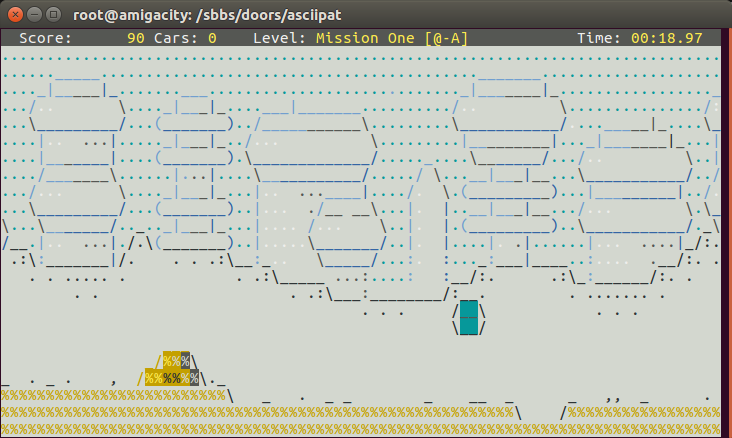

#Syncterm v1.1b mac#
By the way, these escape sequences are still supported today by modern computers- for example, Linux and Mac users can try to enter this command:įinally, after disconnecting from the BBS, I can check the files I have downloaded. Which was looking surprisingly, not bad - special formatting and so-called ANSI escape codes allowed to make a pretty complex UI.
#Syncterm v1.1b download#
After the successful login, it was possible to read mail, download or upload files using the text interface. On the other side, the access often was completely free. Because many BBSes were located at home, their services were often available only at night, for example from 0 to 7 am - if you wanted to check your mail, download or upload files, you had to wake up early, something which looks weird today. The speed varied from 300 bits/s in the 80s to 56600 bits/s in the 90s, calls were often possible only in the local area, otherwise, the telephone bills could be too high.
#Syncterm v1.1b free#
Obviously, as in the case of any other phone call, this connection could be occupied by only one user at a time, others were just getting a “busy” signal and had to wait until the line will be free again. I’ve searched in Google using the words “public FTP list”, and got a website which has a pretty large list of open FTP sites: The FTP can be used today, for example, for remote server maintenance, but surprisingly, public anonymous FTPs are also available. This document also has internal links to the Transmission Control Protocol (TCP) and the Telnet Protocol, which were described in the “ARPA-Internet protocol handbook” in 1985 (when most of the people did not hear the word “Internet” at all). Of course, this protocol was not something immutable, lot’s of improvements were made, the phrase “FTP has had a long evolution over the years” was written in the “RFC 959” document published in 1985. Actually, there was no Internet at that time, computers were connected to the ARPA (Advanced Research Projects Agency) network, and there was an obvious demand to have a protocol for files exchange. The FTP (File Transfer Protocol) is not only “old”, but “ancient”, compared to modern standards - the first specification was published as RFC 114 on 16 April 1971. People were browsing online pages this way about 30 years ago
#Syncterm v1.1b how to#
If you must use RapidScat Sigma-0 data but you are unsure about how to use the L1B data record, please consider using either of the following L2A datasets: 1) or 2). Caution: this dataset is intended for expert use only. Furthermore, there is no consistent local time of day retrieval. Unlike QuikSCAT, ISS-RapidScat is not in sun-synchronous orbit, and flies at roughly half the altitude with a low inclination angle that restricts data coverage to the tropics and mid-latitude regions the extent of latitudinal coverage stretches from approximately 61 degrees North to 61 degrees South. The NASA mission is officially referred to as ISS-RapidScat. RapidScat is a Ku-band dual beam circular rotating scatterometer retaining much of the same hardware and functionality of QuikSCAT, with exception of the antenna sub-system and digital interface to the International Space Station (ISS) Columbus module, which is where RapidScat is mounted. Data are provided in single-orbit files in HDF-4 format.



The orientation of the long dimension of the slices varies with the rotation of the antenna and thus does not align with the along/across track orientation of the wind vector grid in the L2B/L2A products. There are 8 slices that constitute the range-binned components of a pulse each of which has a spatial geometry of approximately 25 km by 7 km. The pulse "egg" represents the complete footprint of the pulse, which has a spatial geometry of approximately 25 km by 35 km. This dataset contains the geo-located Sigma-0 measurements and antenna pulse "egg" and "slice" geometries as derived from ephemeris and the Level 1A dataset.


 0 kommentar(er)
0 kommentar(er)
